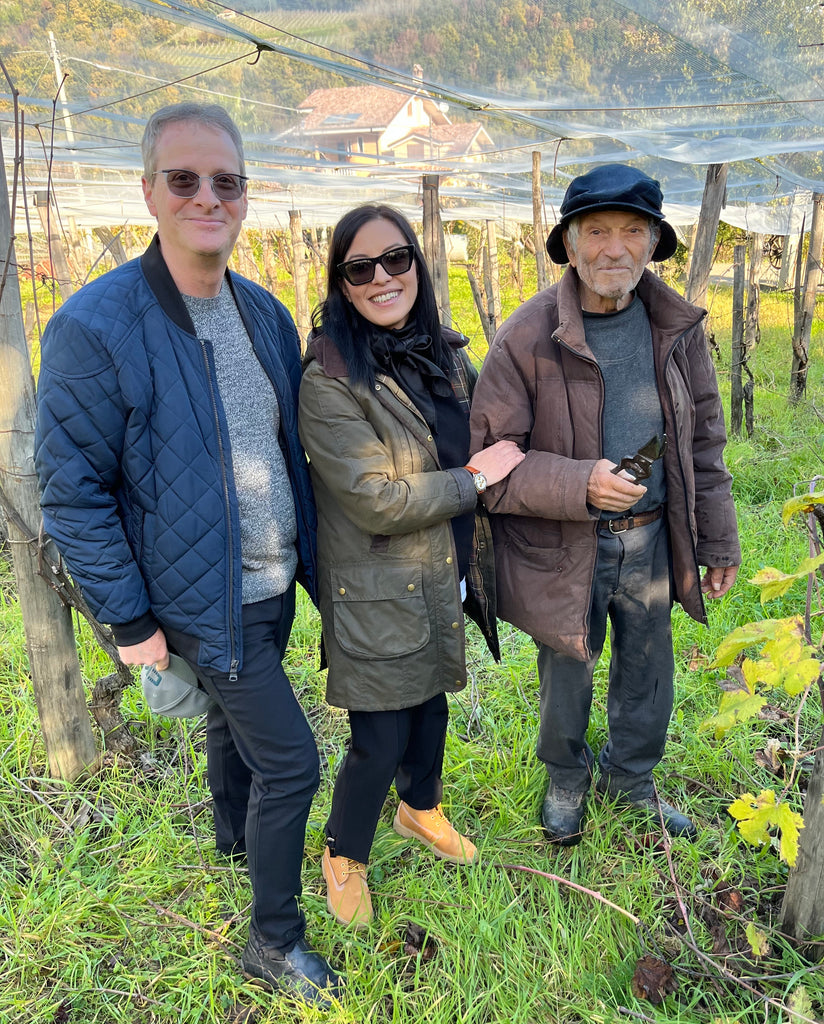Our tasting impressions
Ersa is a wine of class and distinction that belies its position as Francesca's entry red and celebrates that it is a late-release, handcrafted beauty. The nose is earthy with red fruits. It's bright and balanced and manages to seem both savory and sweet. The finish is longer than you might expect. This is a delightful Rosso we will happily drink, allowing Francesca's other wines time to develop in the cellar.
About this wine
Ersa 2018 (the second vintage produced) is a blend of 30% Aglianico, 20% Cabernet Sauvignon, 20% Barbera, 10% Sangiovese and 20% other native varieties. The soil is calcareous with green and red clay and some sandstone. The elevation is about 250 meters.
A manual harvest began on October 2nd. The grapes for this wine are selected on the first pass through the vineyards (the remaining suitable grapes go into Difesa). Fermentation is in plastic vats. Maceration is on the skins for 20 days with gentle punch-downs. The wine is moved into French oak barrels (10% new and 90% one-year old) to age for 24 months. Then they rest in bottle for at least a year, so they are ready to enjoy upon release. Production in 2018 was 7,700 bottles.
About the grape
Aglianico is one of Italy's three most prestigious grape varieties - along with Nebbiolo and Sangiovese. Grown mostly in southern Italy, it is at its best from Campania and Basilicata. It thrives in a warm and dry climate. Cabernet Sauvignon, famous the world over, is hearty fruit that flowers and ripens late. It is highly adaptive to a wide variety of climates and soils. Its vines are capable of prodigious production, which must be restricted in order to produce the grape's best quality. Barbera is a dark-skinned grape from vigorously growing, easy to manage vines. It is high in acidity, low in tannins and light-bodied. Sangiovese is the most planted grape in Italy. It is dark and thick-skinned, slow-ripening, acidic and tannic.
Francesca's thoughts on the vintage
For 2018, temperatures were above normal in the winter, with sporadic rains. In February, rain was intense at times with snow in the higher elevations. This was followed by a Serbian front that plunged temperatures to below zero. Most of March was warmer until a nationwide frost that did considerable damage to the buds. Spring and rising temperatures arrived mid-April but May started rainy and windy. The weather was typical for most of the spring and summer without being excessive and the right amount of rain allowed ideal flowering and fruit setting. Sunny days, cool temperatures (especially at night) and the absence of sea winds allowed for a truly excellent phenolic maturation of the grapes, with the possibility of developing good aromas and acidity.
On your table
We haven't tried this yet, but this wine might pair very nicely with moussaka. We like the interplay of the complex but not domineering flavors of each. We also like the historical connection of the Greeks and Paestum.
Francesca Fiasco is young, passionate and driven. Since 2015, she has relentlessly worked the land and cellar her grandparents started many decades ago in the beautiful Cilento National Park (a preserve that prohibits any industrial activity). Everything she knows about farming and wine she learned from her Nonno. More than 90 years old, Luigi still tends the vines.
From the 6.5 hectare farm (comprised of various small vineyards), Francesca produces less than 20,000 bottles per year from a mixture of traditional local grapes, some typical of other regions of Italy and one conspicuous interloper from France - Cabernet Sauvignon. Production of her 4 wines is unconventional - it's Nonno's way - but the results are remarkable. The expectation from a farm like this, in an area like this, is that the wines will be rustic, simple and honest. Instead, we find sophistication and complexity without compromising a clear expression of the place they come from.
To say that this is manual labor is an understatement. It starts with the grapes for each wine being harvested separately and concludes with Francesca writing notes on each case of wine leaving her cellar. Her devotion and determination are undeniable. The wines from Paestum may not be well-known or highly regarded but don't tell her that - nor does anyone who has tasted her wines much care. Wow, what a discovery! Only the great story of this family and Francesca's project can outshine her wines.
